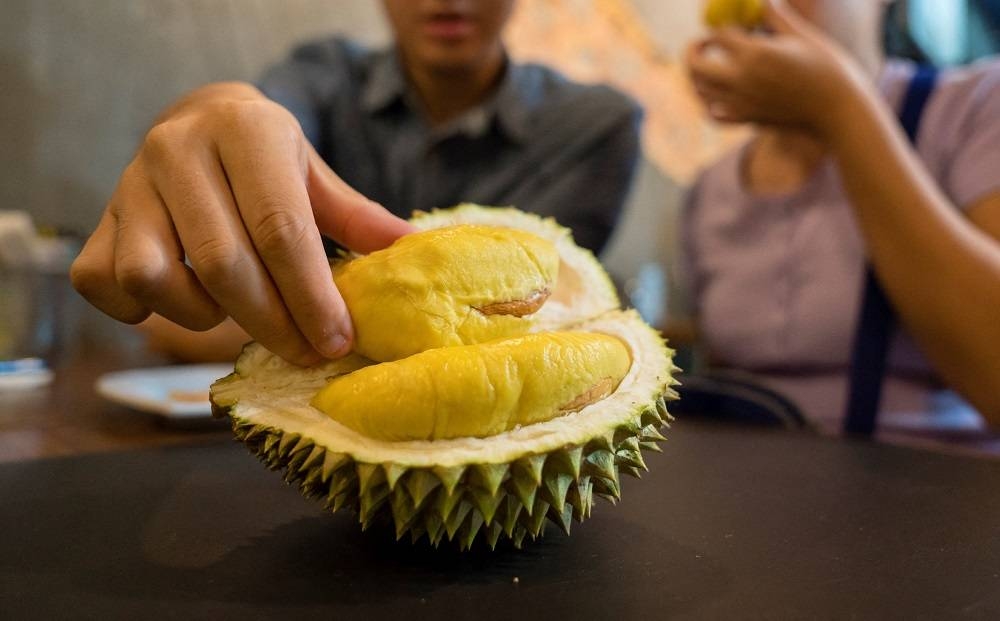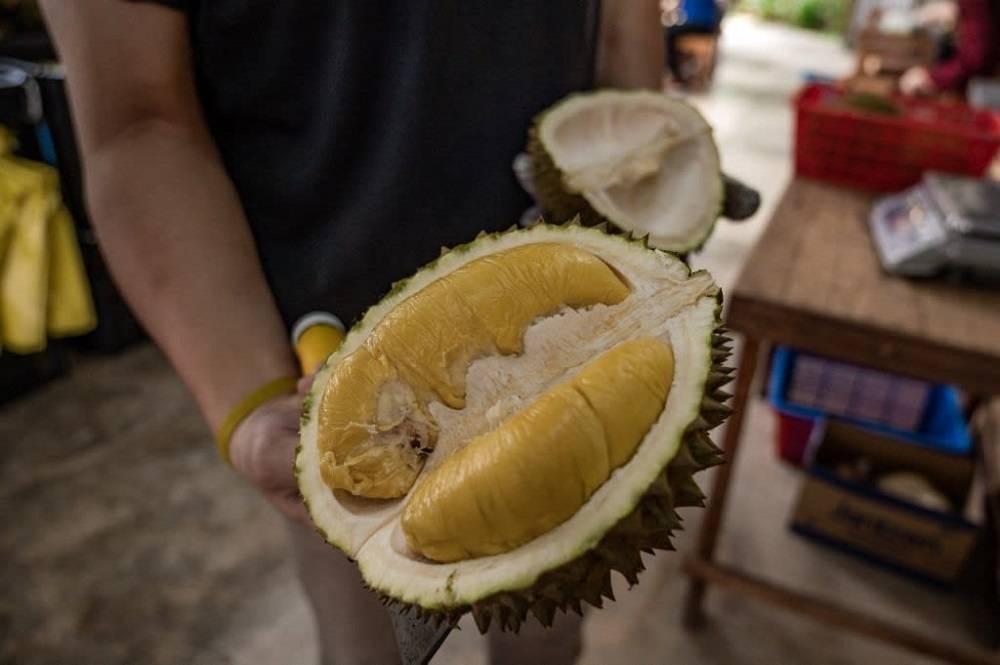SINGAPORE, May 21 — Durian lovers looking to get their hands on the king of fruits during the peak season of June to August might have to pay more as Malaysia faces a shortage in supply due to bad weather conditions.
Durian sellers in Singapore told TODAY that they are expecting a tough season this year as supply is going to be halved.
They are also bracing for manpower woes and the prospect of losing customers who may make the trip to Malaysia to get their yearly fix.
Josiah Jeremy, founder and chief executive officer of Golden Moments, a durian retailer with a shop in Geylang, said that bad weather conditions have reduced the number of flowers produced by durian trees.
“For Mao Shan Wang (a popular durian type), it takes about 120 days for a flower to grow into a fruit ready for harvest. But during this process, not all flowers develop fruits,” he explained.
can produce between four and six durians. With bad weather, some branches may produce at most three durians — or none at all.
“Because it’s so difficult to produce these fruits, their costs are high. And with bad weather, costs will go up.” Undeterred by these conditions, Jeremy said he is certain that he can secure enough stock from his usual suppliers, with whom he has built a long-standing connection since he started the business in 2017.
“The revenue in May this year is looking to be slightly lower than in May last year, but I am still confident we will perform well when peak season arrives,” he added.
Zen Ho, who is in charge of Durian Empire in Punggol, said that the durians from Malaysia that are sold in Singapore typically come from the Johor and Pahang states. The previous supply of durians from Pahang ripened in March this year, so the harvesting season — which used to take place from November to February — had gone on until April.
“The durian trees need some time to produce fruits for harvest, so the next crop of durians from Pahang will likely come in July,” Ho explained.
“But now, there will likely be fewer crops in the June or July period due to the delay in the growth cycle, so prices will definitely increase.” Ho’s store has been closed since end-April and he plans to open in June when the season begins. The June-to-August season typically makes up half of his yearly sales.
“I originally wanted a two-week break and to open in May, but the quality (of the durians) wasn’t good and the prices were high because there wasn’t enough supply, so I’m opening in June instead.” Given the uncertainty over supply for now, he has yet to recruit more workers for the peak sales period and will observe the situation first before hiring.
“Since the last season was also longer and ended in April, some customers might be too ‘full’ to eat durian again,” he added.
Consumption habits, manpower woes
For Dennis Tan, his online business The Durian Villa is highly dependent on the upcoming season to stay afloat and possibly expand the company’s reach in the competitive market.
He set up the business last July and got supply from the company’s own farm in Pahang, but with fewer flowers produced by the durian trees, it is looking to be a smaller harvest in the upcoming season.
“We don’t want to increase our prices too much because we have to keep them affordable for our customers... there’s also still uncertainty about the quality of durians and we want to sell only good (durians),” he said, adding that refunds would cost the company more.

Tan also said that he is unable to afford to hire any in-house worker to deliver online orders.
He uses an on-demand, third-party delivery provider to ensure orders get to his customers fresh, but the delivery fees take a huge cut of his profit margins.
Aside from that, because this will be the first time in two years since the Covid-19 pandemic that more people can gather at a store in person to eat durians, he is unsure if he can still attract customers with only online sales.
“Some people are used to eating their durians at a shop, so they might not order and eat at home,” Tan said.
On this point, Jeremy from Golden Moments said that durian sellers in Singapore will also likely be affected by the lifting of travel restrictions between Singapore and Malaysia.
Singaporeans may just hop across the border to have their fill now.
“Some are even starting to plan durian tours,” he added.

A consolation for Jeremy is that his company relies not just on the sale of the fruits, but also by-products such as durian pastries.
These pastries make up half of the sales and they will not be affected by the supply shortage since they are made with durian puree that can be frozen and would be available throughout the year.
Similarly, Josephine Chew, owner of Durian on Wheels, said that the durian desserts it sells will not be affected by the shortage since she has durian puree made from the previous season’s fruits.
She is expecting durian prices from her supplier to double, which would in turn increase the prices customers have to pay, but the sale of durians makes up just a quarter of her business.
The rest are from the sale of other fruits and durian desserts.
She is not too concerned that she will lose customers either, because Singaporeans’ love for the fruit is perennial.
“Every time the season ends, my customers always ask when durians will return (for sale).” — TODAY



















